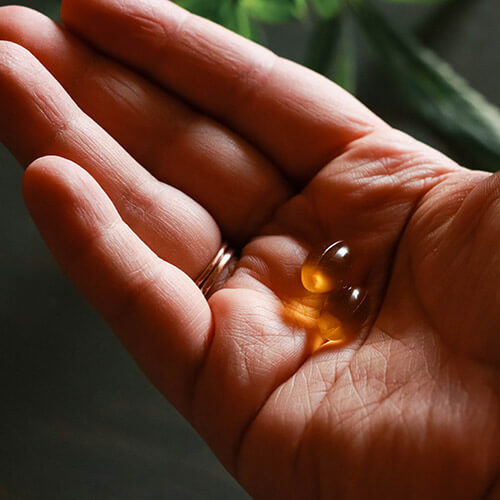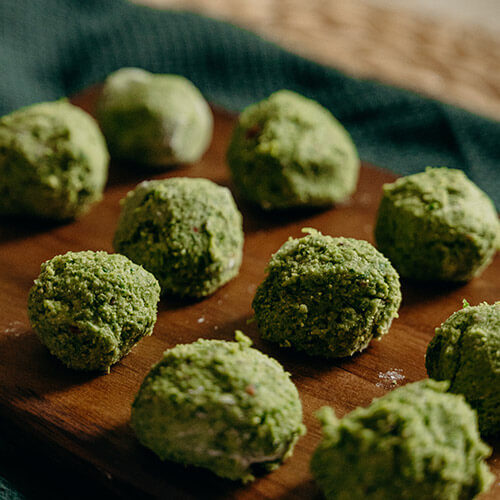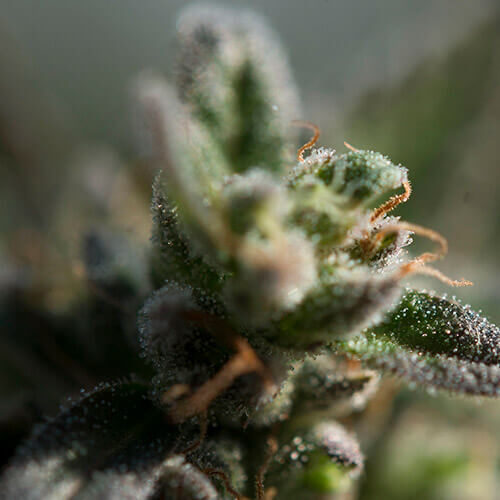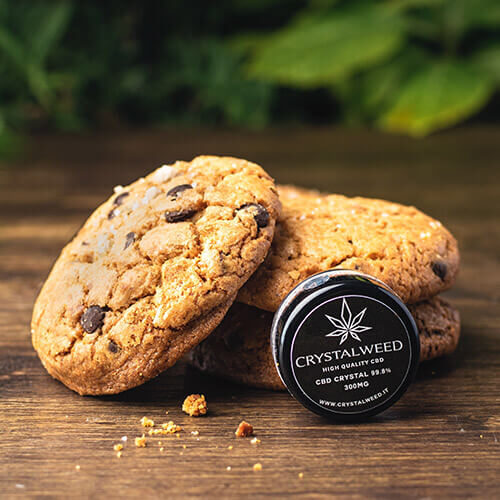Most people are familiar with the cannabis plant’s two VIP players: Tetrahydrocannabinol (THC) and Cannabidiol (CBD). What many people don’t know is that the plant contains hundreds of cannabinoids, all with incredibly specific effects and benefits.

Diagram of the Endocannabinoid Receptors in the Human Body.
The Endocannabinoid System (ECS) is a human system (like the nervous system) which exists in all mammals. Cannabis plants contain cells that produce compounds called cannabinoids which are unique because the human body (and all mammals for that matter) can actually produce similar compounds. Check out our previous article “Getting To Know The Endocannabinoid System” to learn more about ECS and how it interacts with cannabis cannabinoids.
How Cannabinoids Work
Cannabinoids, terpenes and flavonoids are the foundation of the cannabis plant. These incredible organic compounds have been used for thousands of years to treat insomnia, pain, inflammation and even more serious conditions like cancer and Alzheimer’s. Cannabinoids work beautifully in humans because they mimic our body’s own endocannabinoids, which are produced in the brain and in various tissues throughout the body. We also have endocannabinoid receptors which are found in the brain and bodily tissues. When either our own endocannabinoids or cannabinoids from cannabis bond with our receptors, we get a physical response in the body.
TYPES OF Cannabinoids
You’ve probably heard of THC and CBD, but other well known classifications of cannabinoids include CBN (Cannabinol), CBC (Cannabichromene) and CBG (Cannabigerol). Each of those cannabinoid categories gets further broken down based on a number of different factors, one being decarboxylation.
This breakdown or shift in molecular structure can either happen instantly when cannabis is heated (IE sparking a joint) or can happen slowly when the plant sits untouched over time. But first, before decarboxylation, each of these cannabinoids exists in an acid form, noted by “a” next to its acronym. Although similar, the acid forms of cannabinoids actually have different properties, so as cannabinoids age or increase in temperature their molecular properties change.
 Papa & Barkley Releaf 1:1 CBD:THCa Tincture
Papa & Barkley Releaf 1:1 CBD:THCa TinctureTHCA (Tetrahydrocannabinolic Acid)
Before the THC we know and love is activated by heat or decarboxylized, it is actually a different compound called THCA. Unlike THC, THCA is non-intoxicating and is the most abundant cannabinoid found in cannabis. The anti-inflammatory properties of THCA make it a great medicine for treating arthritis and epilepsy. It is also anti-proliferative, meaning it is able to suppress cell growth, especially the growth of malignant cells in tumors.
According to Cresco Labs, “THCA is an effective neuroprotectant, so it is beneficial in the treatment of such conditions as multiple sclerosis, Alzheimer’s and Parkinson’s disease. It can also help to stimulate the appetite in patients suffering from cachexia and anorexia nervosa. Most impressively, research shows that THC-A helps to slow the proliferation of cancerous cells.”
THCa is slowly seeping into the legal cannabis market in the form of capsules and tinctures so that consumers can gain these benefits without the heady buzz of THC.
Δ9-THC (Delta-9-Tetrahydrocannabinol)
THC is by far the most popular and (in)famous cannabinoid, mostly due to the high levels found in the plant and also because of the psychoactive euphoria it produces. THC is successful in managing pain, nausea, sleep disorders, anxiety, and appetite. It is also a neuroprotectant, meaning it protects neural pathways in the brain and nervous system, making it effective in treating neurodegenerative disorders. And of course, THC is psychoactive and will get you high.
THCV (Tetrahydrocannabivarin)
Like THC, THCV is a psychoactive cannabinoid and is found primarily in Sativa strains. This cannabinoid has been named the Aderol of cannabis as it is known for boosting energy, increasing focus and suppressing appetite. It may seem contradictory as high THC sativa strains are typically perceived to increase anxiety, however the uplifting effects of THCV have actually shown to be helpful in reducing anxiety, and even preventing panic attacks, which makes it a great choice for treating PTSD or other anxiety disorders. It is also a neuroprotectant, meaning it can protect the central nervous system and slow down degeneration making it an ideal medicine for treating Alzheimers, Parkinson’s, and Multiple Sclerosis.
Δ8-THC (Delta-8-Tetrahydrocannabinol)
Delta-8-THC is less known than traditional Delta-9-THC mostly because it occurs in smaller quantities in the plant. Although similar, their effects do offer differences, such as Delta-8’s incredible anti-nausea properties and lesser psychotropic / intoxicating mental effects. Imagine the psychoactive benefits of THC but with a little less high and a little more clarity.
CBDa (Cannabidiolic Acid)
CBDa is the raw precursor to CBD. About a decade ago researchers started to notice similarities between CBDa, THCa and common non-steroidal anti-inflammatory drugs (NSAIDs) like Ibuprofen due to their ability to inhibit the COX-2 receptor. You’ve probably heard that CBD is great for reducing inflammation, CBDa is actually even more beneficial as an anti-inflammatory agent.
CBDa has also been studied to treat nausea, especially in patients suffering from side effects of radiation and chemotherapy. One study even found CBDa a thousand times more powerful than CBD to reduce nausea and anxiety when administered alongside low doses of traditional pharmaceutical medications used for chemotherapy patients. It is also a powerful anti-convulsive agent that is more bioavailable than CBD, meaning it is more easily metabolized by the body and therefore its effects are enhanced.

18:1 CBD Care By Design Capsules
CBD (Cannabidiol)
CBD is sweeping the nation and rightfully so. We love this cannabinoid due to its wide range of benefits, without the high. CBD is recommended for patients of all ages and even species, including children, seniors, and pets!
CBD has gentle, anti-inflammatory and muscle relaxing properties which make it perfect for treating anxiety and sleep disorders. It has also been proven effective in treating both cancer and side-effects of cancer treatment, aiding in anti-nausea and fighting tumors. It is an anti-inflammatory, anti-proliferative, and anti-convulsant cannabinoid found successful in treating seizure disorders as well.
 Mary’s Medicinals Transdermal CBN Patch
Mary’s Medicinals Transdermal CBN PatchCBN (Cannabinol)
CBN is quickly gaining a reputation as the sleepy time cannabinoid. CBN forms when THCA breaks down over time; typically fresh cannabis has no CBN present. CBN is mildly psychoactive and is commonly used as a sedative alongside other cannabinoids for maximum effect. It also has immune boosting properties that help with pain and inflammation related to arthritis and Crohn’s disease. Promising studies on glaucoma patients demonstrate the ability of CBN to reduce intraocular eye pressure as well as dilate blood vessels, increasing blood flow to the eyes which aid in relief. CBN is also an anticonvulsant, preventing or reducing seizures in patients suffering from epilepsy or other seizure disorders.
CBCa (Cannabichromenic Acid)
CBCa breaks down via decarboxylization and forms CBC. CBCa research is still in its infancy but early studies found successful results. Not only did findings reveal reduction in tumor size in rats with cancer, but also prevention of metastasis (spreading). CBCa shows signs of anti-inflammatory, antimicrobial and analgesic (pain relieving) activity, but more research still needs to be done to confirm these findings.
CBC (Cannabichromene)
CBC is another non-intoxicating cannabinoid but works best in combination with CBD and THC. It has similar effects to CBN and CBG, such as it’s pain relieving, muscle relaxing and antibacterial properties. It also takes neuroprotection even further with encouraging brain cell growth, increasing memory and learning, making it ideal for those suffering from neurodegenerative disease. It is suggested to relieve pain, reduce inflammation, inhibit cell growth in tumor/cancer cells, and promote bone growth
CBGa (Cannabigerolic Acid)
Meet CBGa, the mother of all cannabinoids, responsible for the creation of THCa, CBDa, CBCa, and CBG. Most current research is focused on the cannabinoids created by CBGa and not actually on the compound itself.

Hangover ProTabs by Level: THCA, CBD, TBG, Delta-8 THC
CBG (Cannabigerol)
CBG is another non-psychoactive cannabinoid but is not as well known because it is found in trace amounts in most strains. CBGA breaks down to form other cannabinoids, and is found more commonly in low THC, high CBD strains, including hemp. Modern science is allowing manipulation of the plant so higher CBG strains are being created and becoming more widely available. CBG has been shown to decrease inflammation, pain, nausea and even slow cancer growth. Similar to CBN it has demonstrated promising benefits in reducing eye pressure in glaucoma patients and treating IBS and Crohn’s disease. Another interesting characteristic of CBG is its antibacterial properties; it’s has the potential to successfully fight bacterias that may be resistant to traditional antibiotics. The list goes on for this promising cannabinoid, with signs of fighting cancer, neurodegenerative diseases, anxiety and more. CBG interacts with cannabinoid receptors in our brain like THC does, however it actually relieves anxiety typically caused by high THC and is therefore a buffer to psychoactivity.
Summary
Moral of the story? This plant is magic, and we’re still discovering how powerful it truly is. The information above can be overwhelming but the main purpose of the article is to peel back the layers of the plant and dissect what we know, while keeping in mind what we don’t. The best way to receive all the benefits that the plant has to offer is to ingest a full spectrum product with a range of cannabinoids. If you’re dealing with a specific issue, there are new products entering the marketing that are tailored to individual cannabinoids that may be beneficial for your ailment.
With all that said, the content provided by Mission Cannabis Club is not intended to replace information provided by your medical professional regarding diagnosis or treatment. Always talk to your physician or a qualified health provider before making any changes to your medical program. And remember that in addition to cannabis, diet and lifestyle play a huge role in many chronic or even serious conditions.
Please chat with our team of Budtender’s if you have any questions and let us know if you’re seeking any specific cannabinoid product, we’re happy to look into it for you!
Article written by Alexa Jesse.










